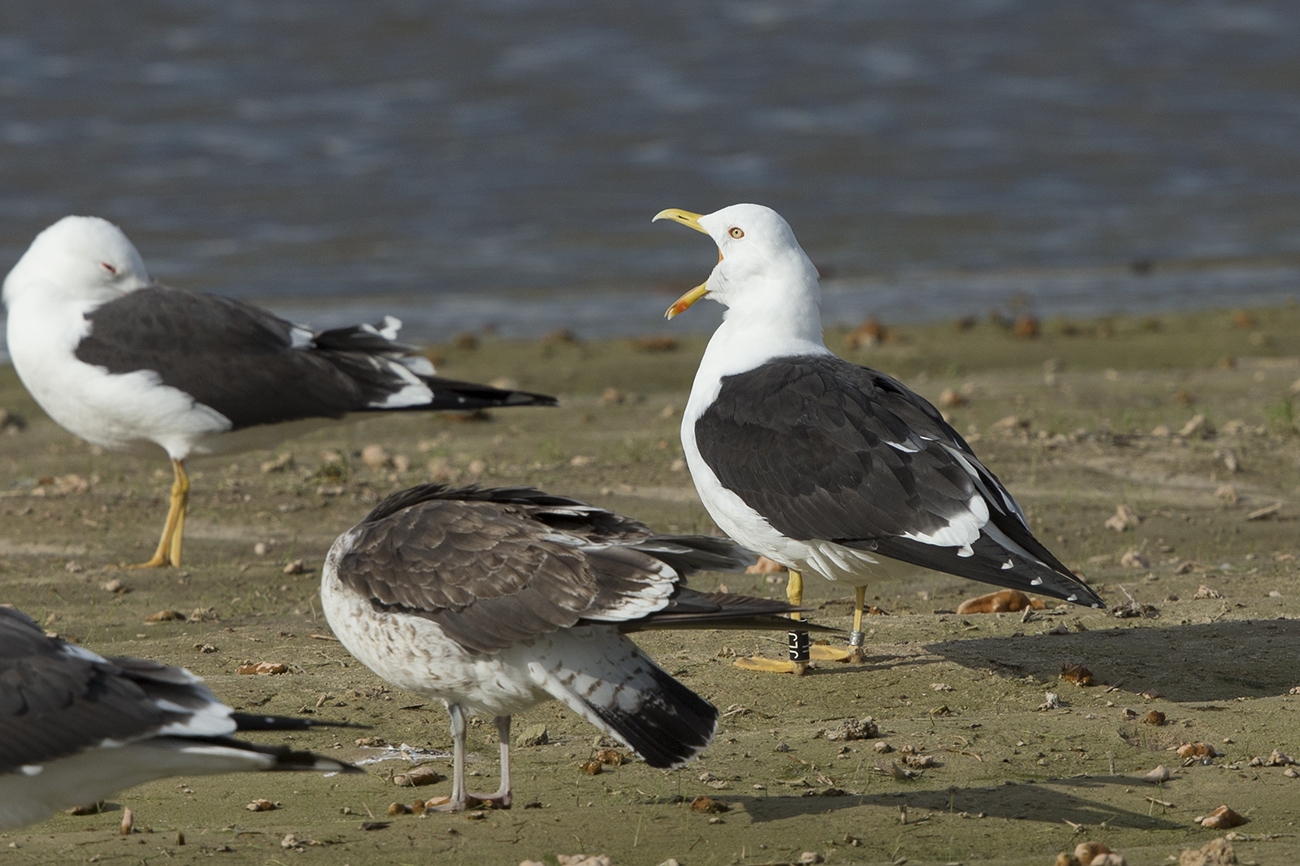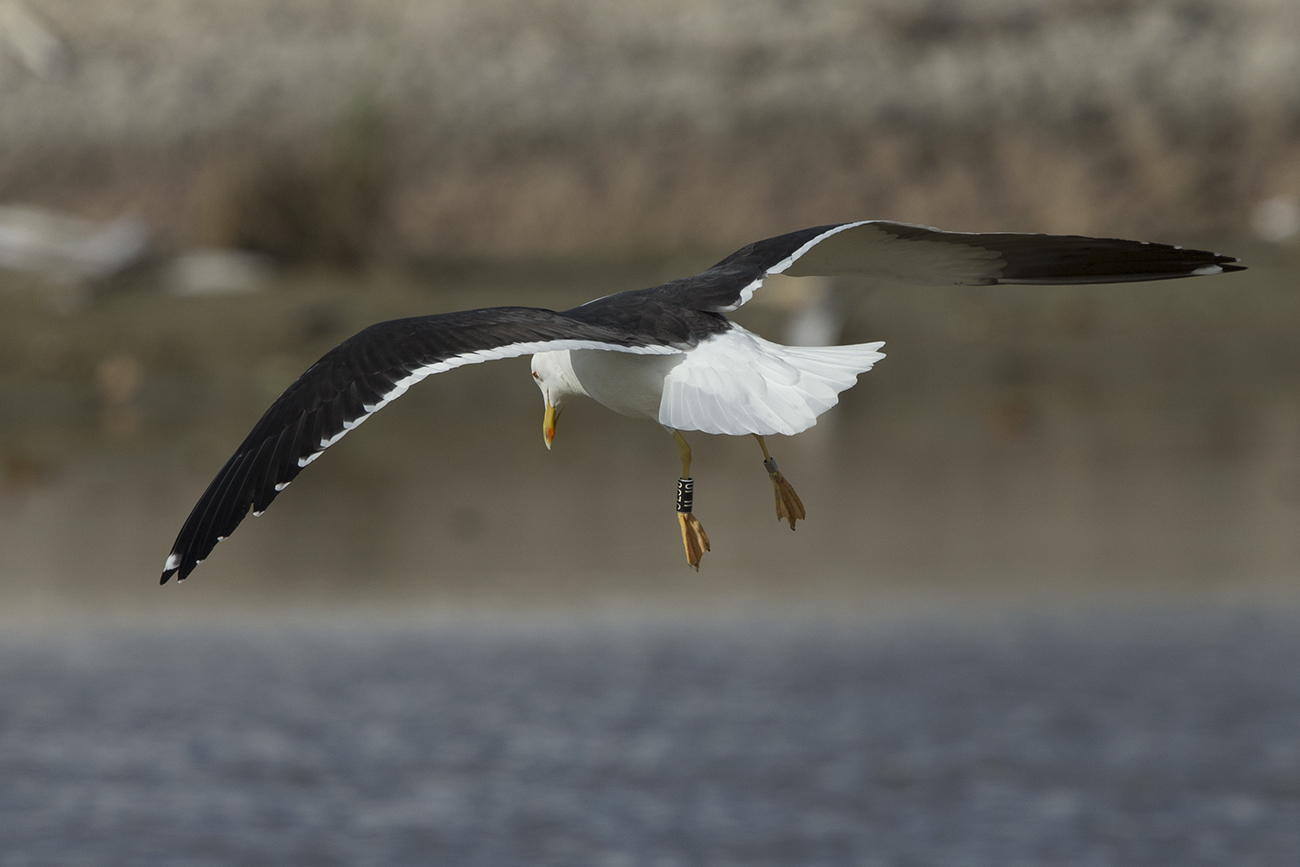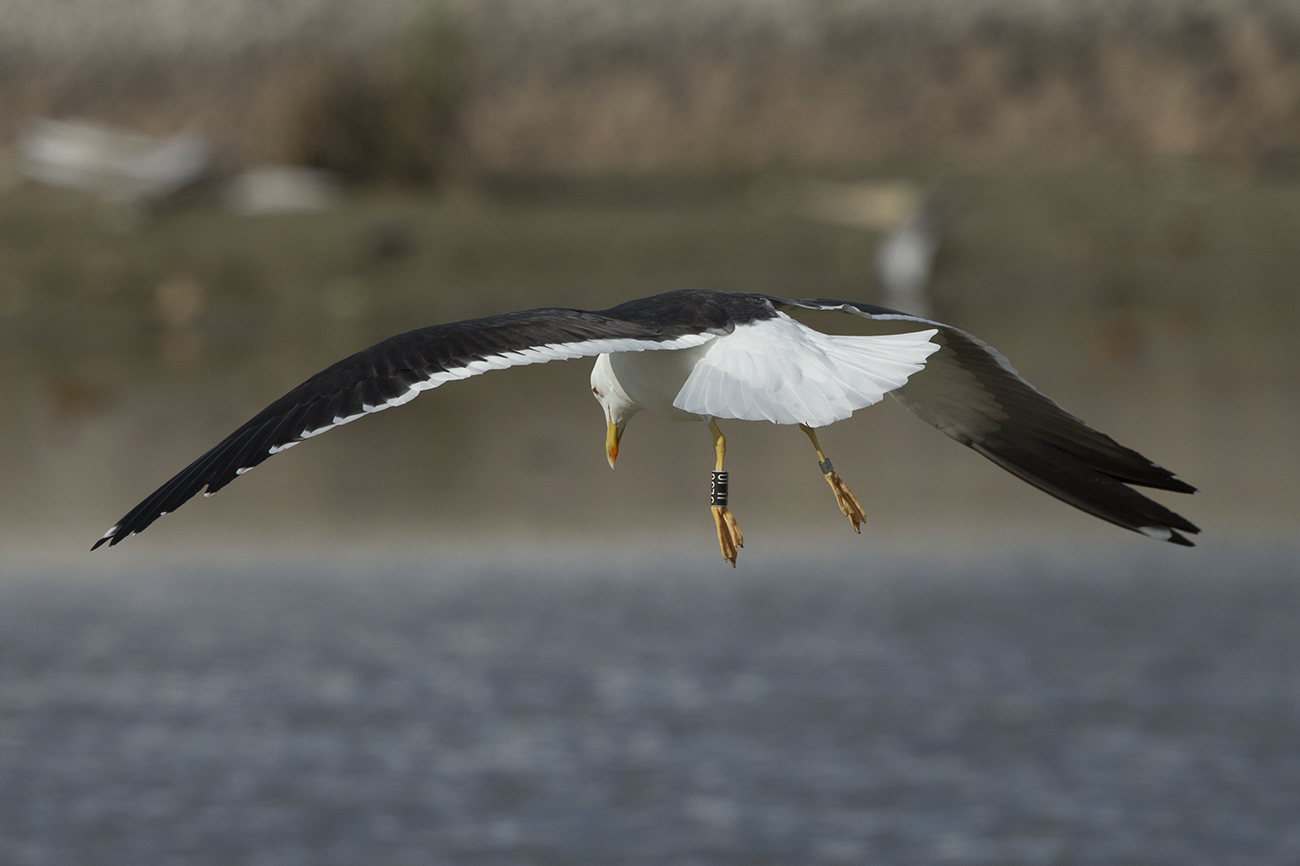 nominate Lesser Black-backed Gull (L. f. fuscus)
nominate Lesser Black-backed Gull (L. f. fuscus)
(last update:
Amir Ben Dov (Israel)
Hannu Koskinen (Finland)
Mars Muusse (the Netherlands)
fuscus 1cy July
fuscus 1cy Aug
fuscus 1cy Sept
fuscus 1cy Oct
fuscus 1cy Nov
fuscus 1cy Dec
fuscus 2cy Jan
fuscus 2cy Feb
fuscus 2cy March
fuscus 2cy April
fuscus 2cy May
fuscus 2cy June
fuscus 2cy July
fuscus 2cy Aug
fuscus 2cy Sept
fuscus 2cy Oct
fuscus 2cy Nov
fuscus 2cy Dec
fuscus 3cy Jan
fuscus 3cy Feb
fuscus 3cy March
fuscus 3cy April
fuscus 3cy May
fuscus 3cy June
fuscus 3cy July
fuscus 3cy August
fuscus 3cy Sept
fuscus 3cy October
fuscus 3cy Nov
fuscus 3cy Dec
fuscus 4cy Jan
fuscus 4cy Feb
fuscus 4cy March
fuscus 4cy April
fuscus 4cy May
fuscus 4cy June
fuscus 4cy July
fuscus 4cy Aug
fuscus 4cy Sept
fuscus 4cy Oct
fuscus 4cy Nov
fuscus 4cy Dec
fuscus ad Jan
fuscus ad Feb
fuscus ad March
fuscus ad April
fuscus ad May
fuscus ad June
fuscus ad July
fuscus ad Aug
fuscus unringed Aug
fuscus ad Sept
fuscus ad Oct
fuscus ad Nov
fuscus ad Dec
Larus fuscus fuscus 2cy-7cy JLJ0 February 2009 - April 2014, Ashdod, Israel. Pictures: Amir Ben Dov.
JLJ0 was ringed in northern Norway. At the time of ringed, the subspecies of this Lesser Black-backed Gull was not known, as it was ringed in a mixed colony of pale and dark mantled birds. Now it turned up in Israel, it is most probably Larus fuscus fuscus. It was ringed as pullus (sex unknown) on July 27 2008 at Heimlaukøya - Lemmingsvær, Tranøy, Troms, Norway (69°01'36"N 016°52'35"E).
More information about migration strategies in Norwegian fuscus and the ringing programme in the three northern counties of Norway: Nordland, Troms and Finnmark, can be found here: The summary for juveniles can be found in the fuscus 1cy October section, the summary for adults can be found in the fuscus adult October section.
Morten Helberg, Geir Systad, Ingve Birkeland, Nils Lorentzen & Jan Bustnes published an article about this research in Ardea 97, 2009, titled: Migration patterns of adult and juvenile Lesser Black-backed Gulls Larus fuscus from northern Norway. The complete PDF can be found HERE.
below: fuscus 2cy JLJ0 February 26 2009, Ashdod, Israel. Picture Amir Ben Dov.
Incredible bird, considering the time of the year. Almost completely juvenile, with only a few scapulars moulted and no obvious moult gaps in the wing-coverts.

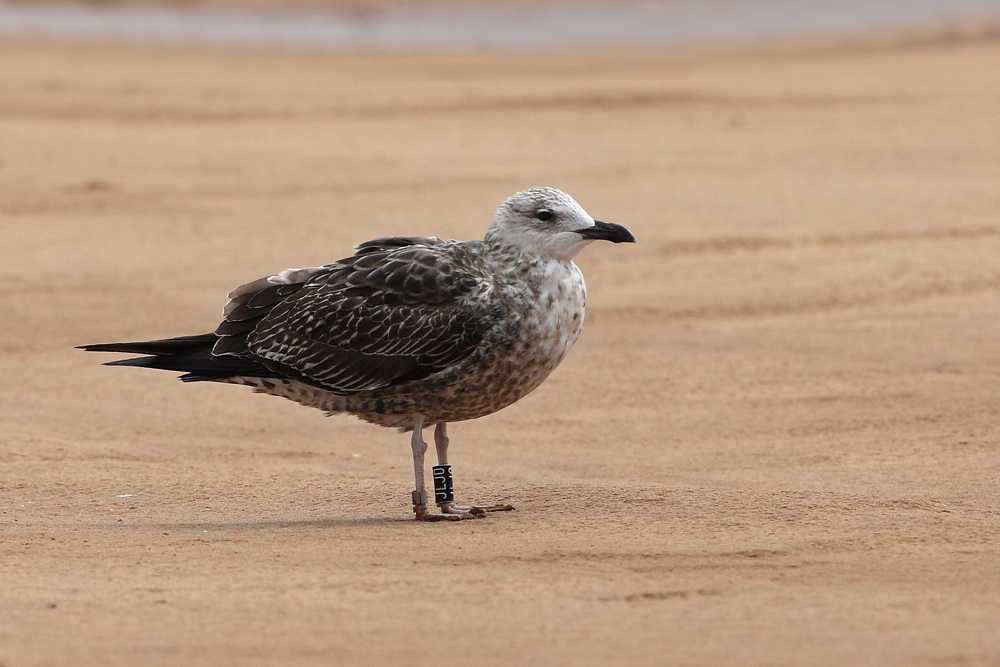
Larus fuscus fuscus 3cy JLJ0 February 27 2010, Ashdod, Israel. Picture Amir Ben Dov.
JLJ0, still moulting the tail feathers, and as it seems, it has two moult waves.
The next paragraph is speculation, but could serve as a theory to explain 3cy plumage in nominate fuscus as we see it in N Europe:
JLJ0 is moulting the central primaries, with the inner primaries already replaced, now showing neat white tips. In the far wing of the first image below, there seem to be some central primaries still missing/growing. If this gap will be fully grown as well, probably a moult division will be visible in the wing between the inner 6 or 7 primaries and the outermost 4 or 3 feathers.
But the interesting thing is: the outer primaries in the far wing, currently present, are not old at all. In fact, they seem to be replaced very recently as well, with P10 still growing in the far wing, and p10 still old in the near wing (old and no mirror on P10). If this strategy is interpreted correctly, JLJ0 has two simultaneous moult waves going on in the wing. From these two waves, the result will be similar: both waves lead to fresh new primariers. But there is also a difference: although the prtimaries replaced in these two waves are replaced at the same time, the pattern is obviously different, with the inner primaries adult-like with white tips, and the outer primaries simply dark, albeit that P10 will show a mirror in many birds (this may depend on the timing of replacement of P10, i.e. in spring).
A moult sequence, with simultaneous moult waves in the wing, was already described as "StaffelMauser" for nominate Lesser Black-backed Gull Larus fuscus fuscus by Stresemann & Stresemann in 1966 in Journal für Ornithologie. They described a periodische Staffelmauser, a step-wise moult.
The question to be answered is: "How do we interpret the age of primaries in 3cy birds in N Europe?". Can we reconstruct the moult sequence, if we only see the final result in N Europe?
For instance: how many primaries were replaced on the wintering grounds, and what was the strategy in C84A? And what about this bird: C10H?
C10H was photographed as 2cy bird and 3cy bird, and the first conclusion, when seeing the differences in the primaries between these age-classes, would be: C10H must have replacved P1-P10, and again up to P7, so 17 primaries were replaced in the winter period. But if StaffelMauser is involved in these birds, the number of replaced primaries could be less. The moult strategy would be different, with still this possible result.
Hopefully, we can track more 3cy ringed birds over a period of time in late winter, to quantify and qualify the process of StaffelMauser.
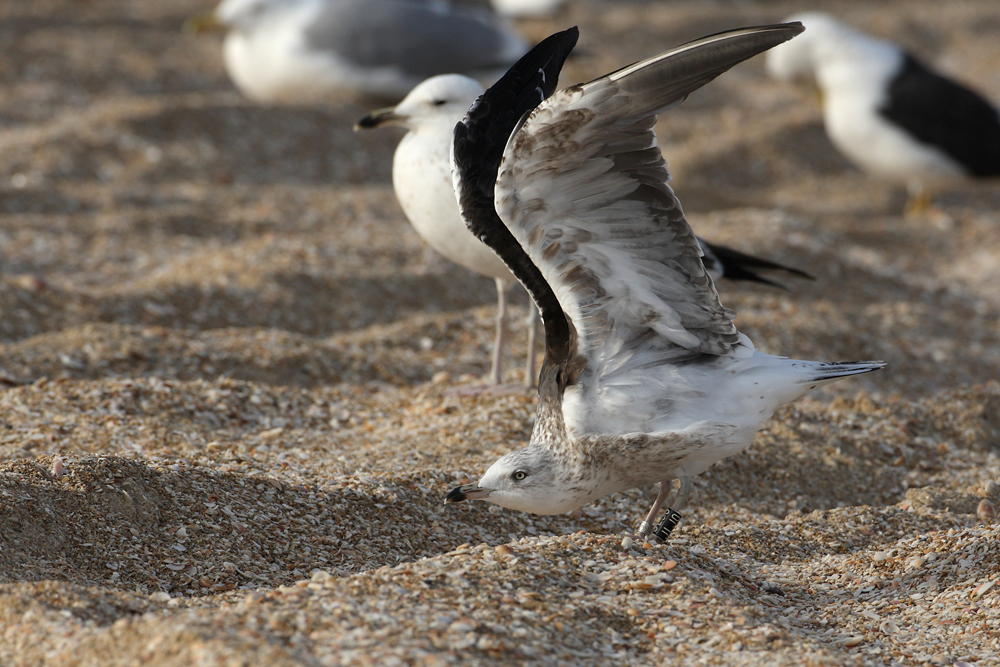
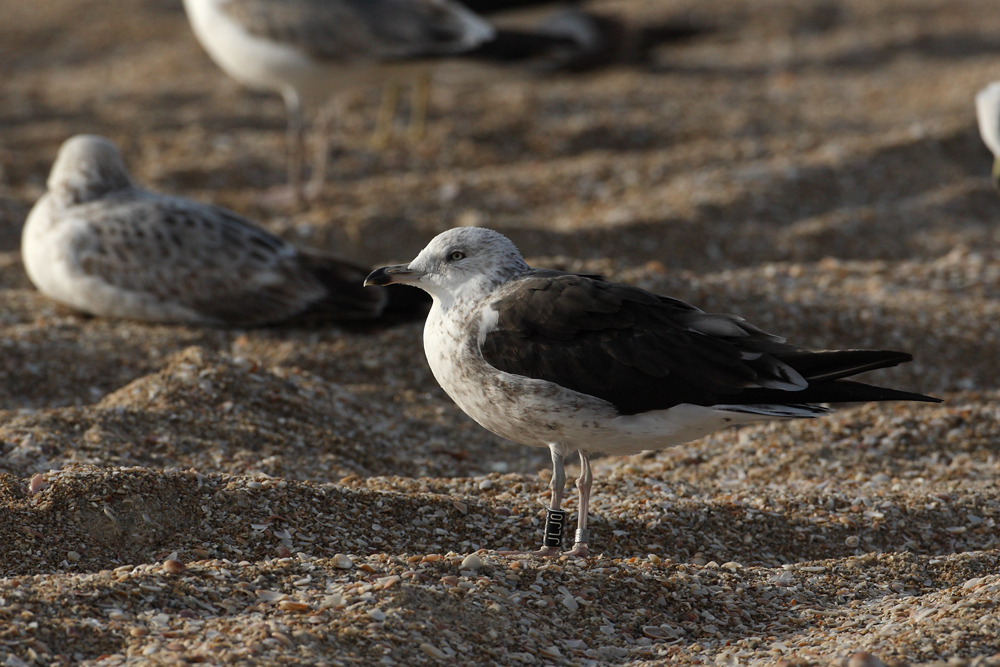
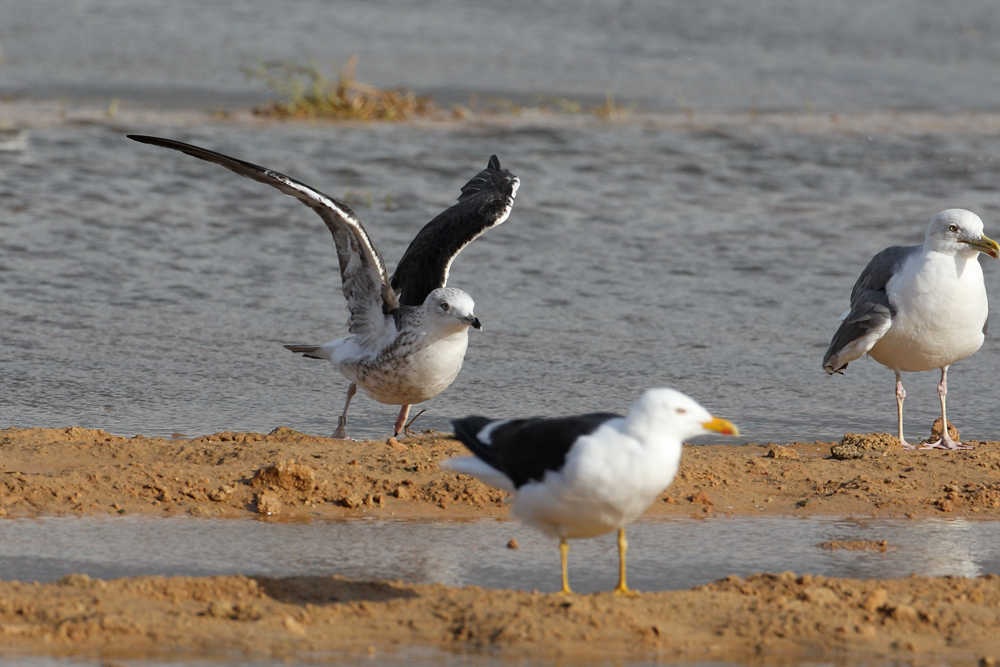
Larus fuscus fuscus 3cy JLJ0 December 24 2010, Ashdod, Israel. Picture Amir Ben Dov.
JLJ0, again moulting the tail feathers, secondaries and primaries. There are obviously two moult waves in the primaries, as what we may have seen in the images above as well. One moult wave arrived in the outer-wing at P8, with P9-P10 still old. At the ame time, an new moult wave started in the inner primaries.
Moult in the secondaries seem to follow a standard sequence, with two moult waves (normal): one starting at S1, nect to P1 and moving inwards towards the body, and anotherw ave starting at the tertials and moving outwards to meet the first wave at about S15-S16. That point is exactly where you cans till see old secondaries in this bird.
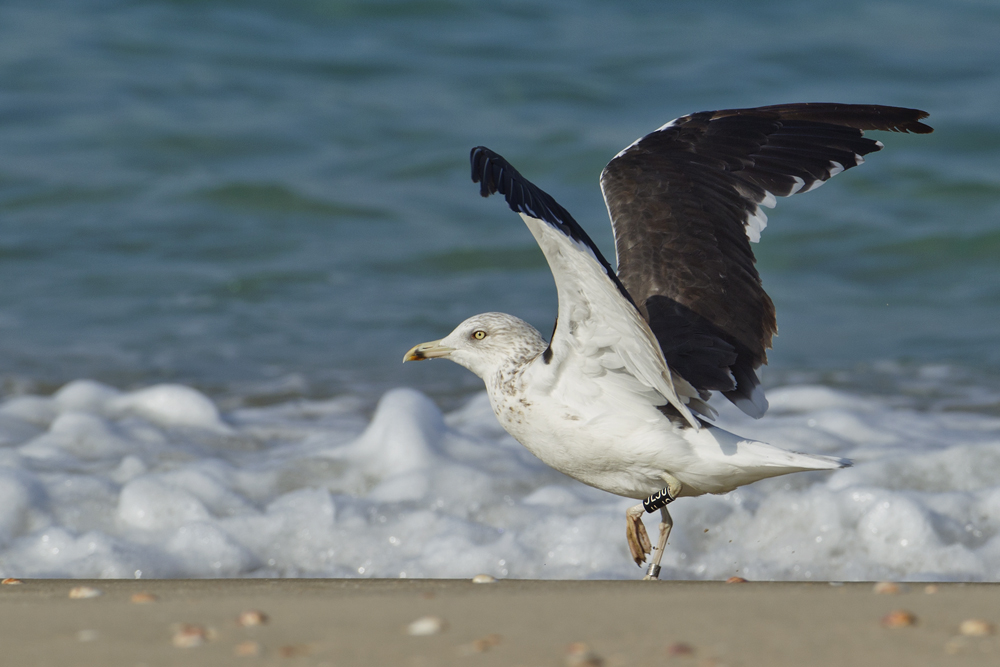
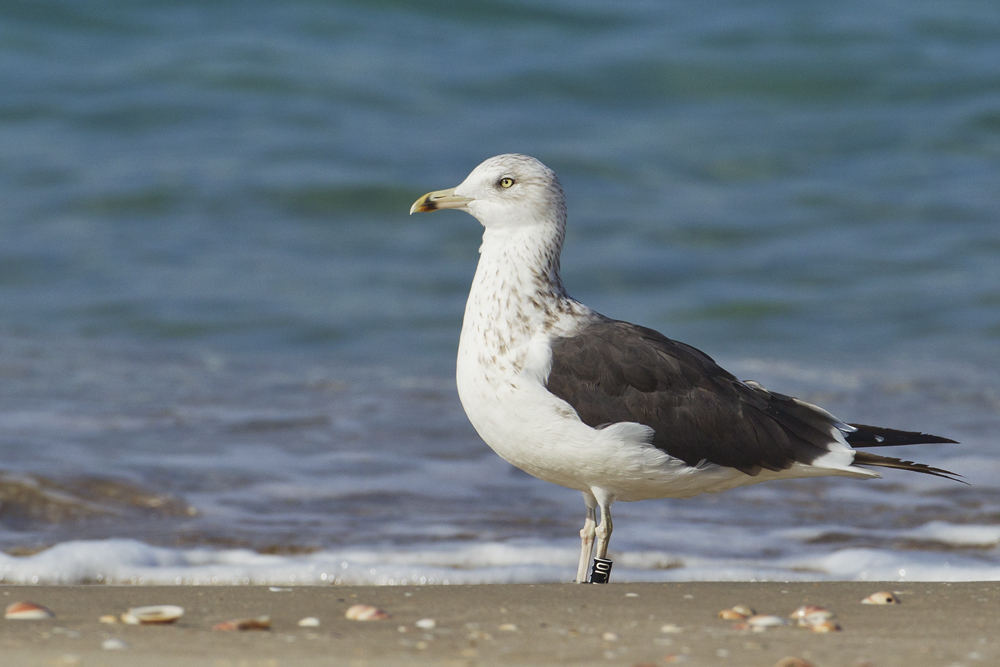
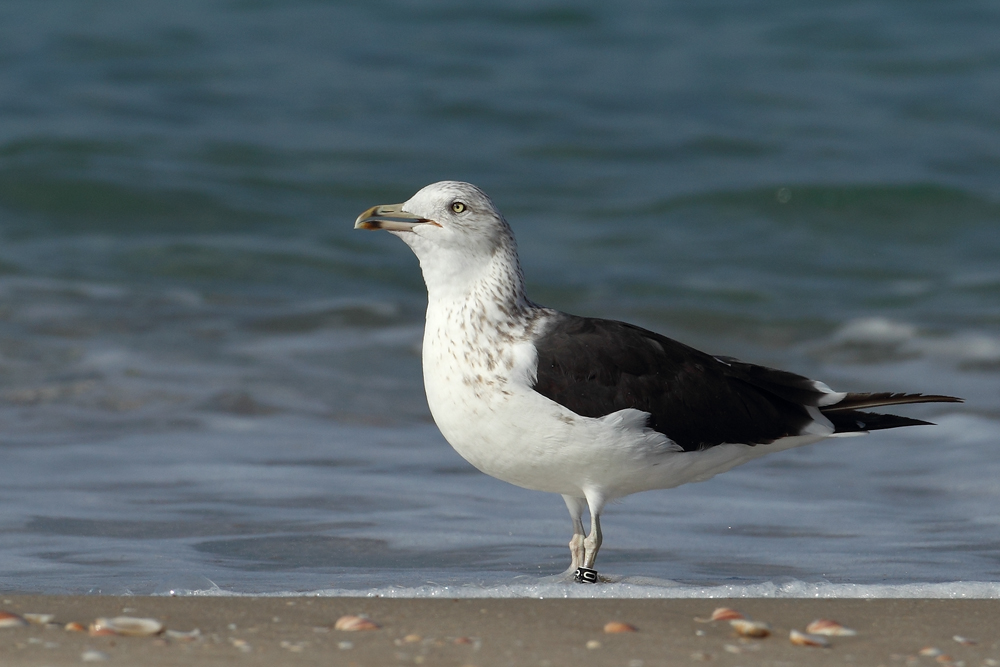
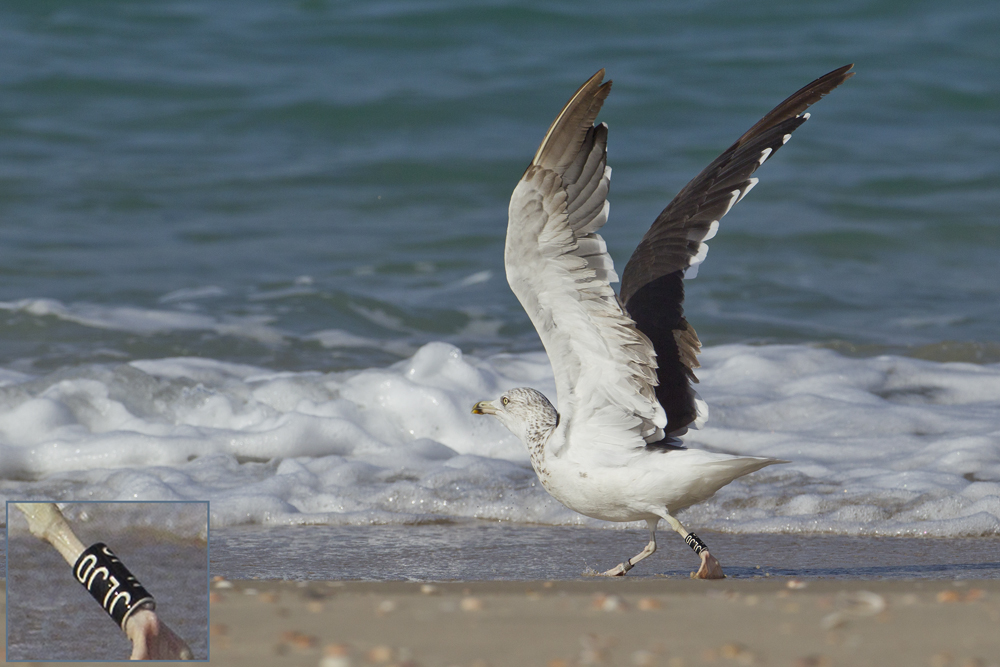
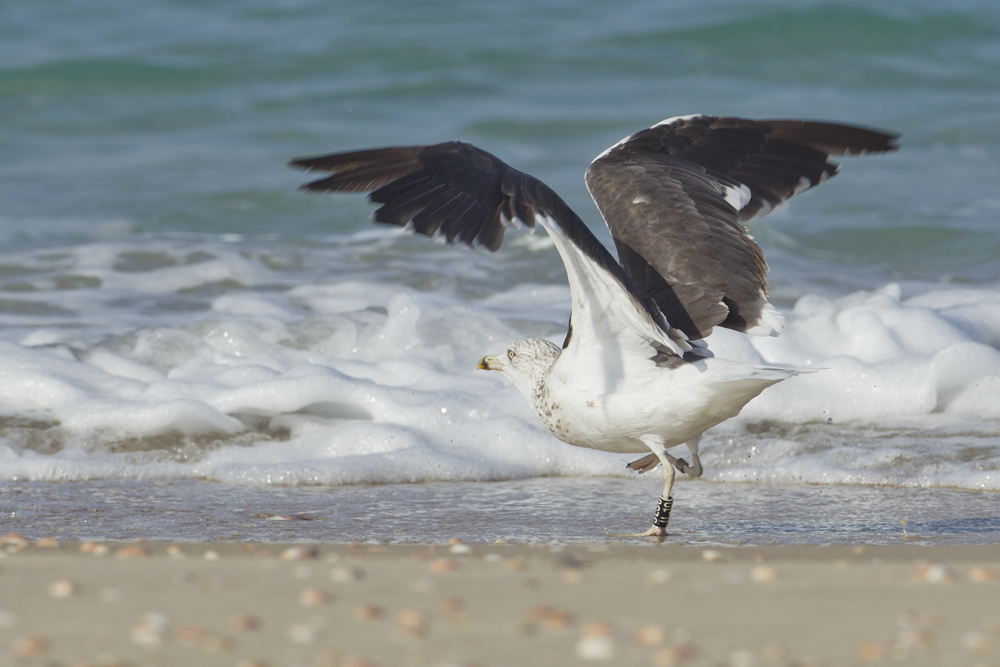
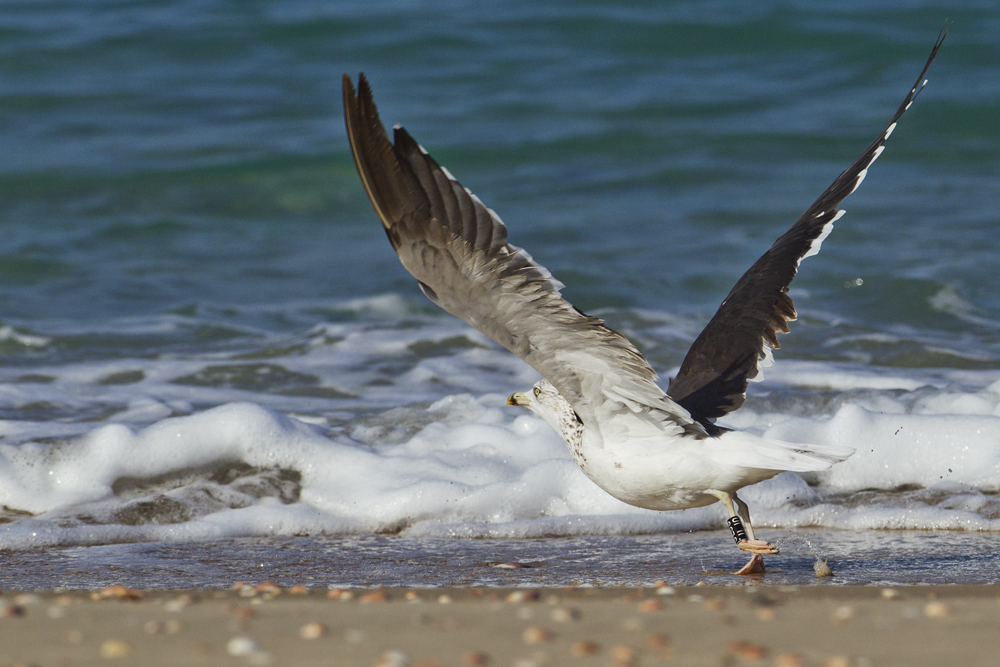

Larus fuscus fuscus 4cy JLJ0 February 04 2011, Ashdod, Israel. Picture Amir Ben Dov.
JLJ0 without obvious moult division in the inner primaries, despite missing P1 six weeks ago. Very obvious bill-band still present, and it remains to be seen if such birds would be called 3cy when seen in Europe without a ring in spring.
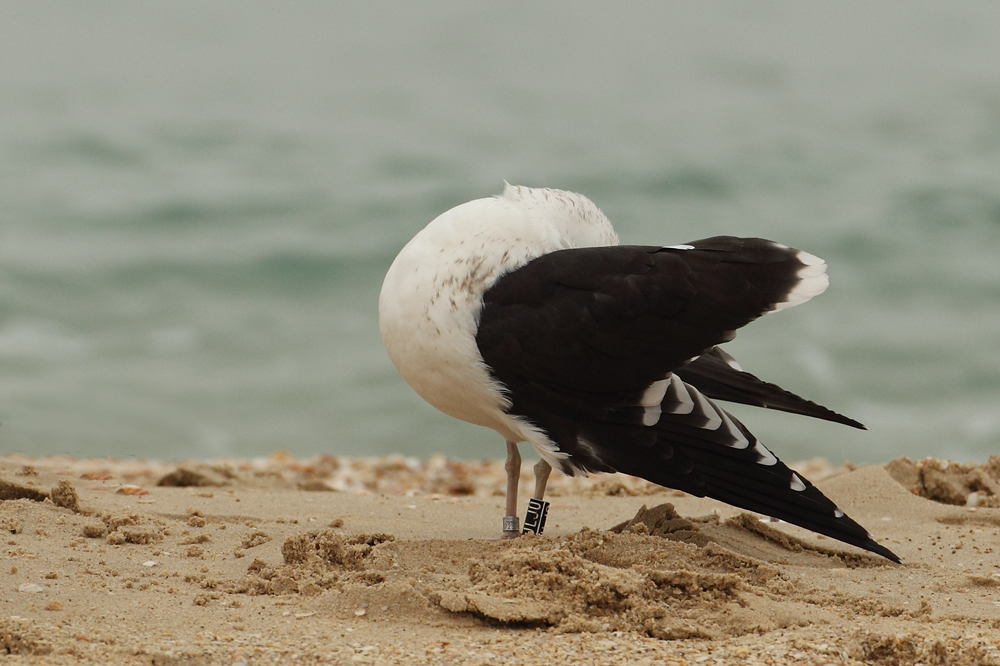
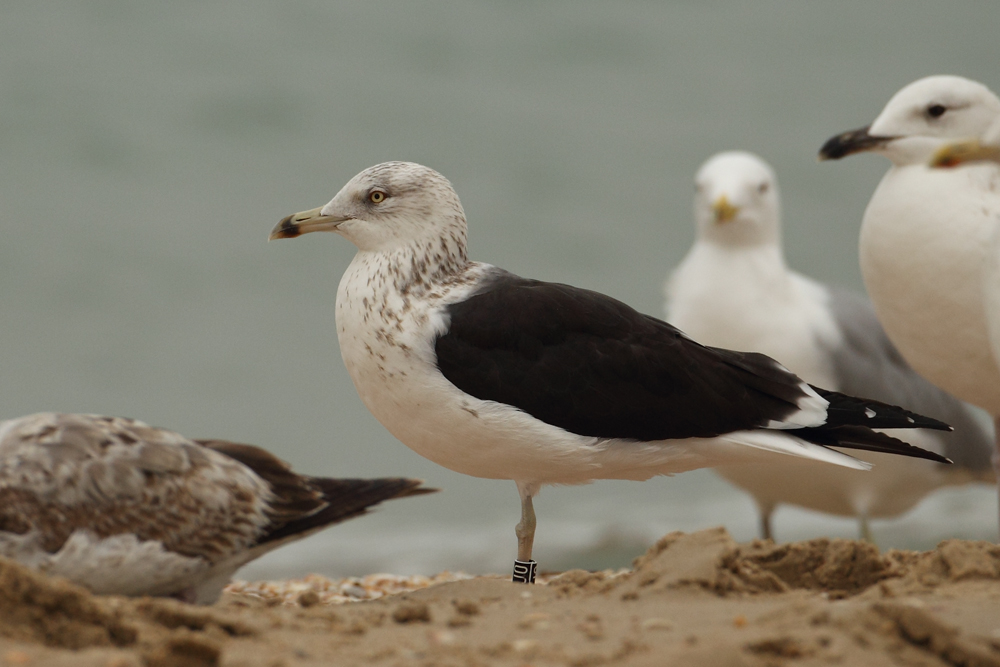

Larus fuscus fuscus 4cy JLJ0 February 12 2011, Ashdod, Israel. Picture Amir Ben Dov.
JLJ0 without obvious moult division in the inner primaries, despite missing P1 six weeks ago. Very obvious bill-band still present, and it remains to be seen if such birds would be called 3cy when seen in Europe without a ring in spring.
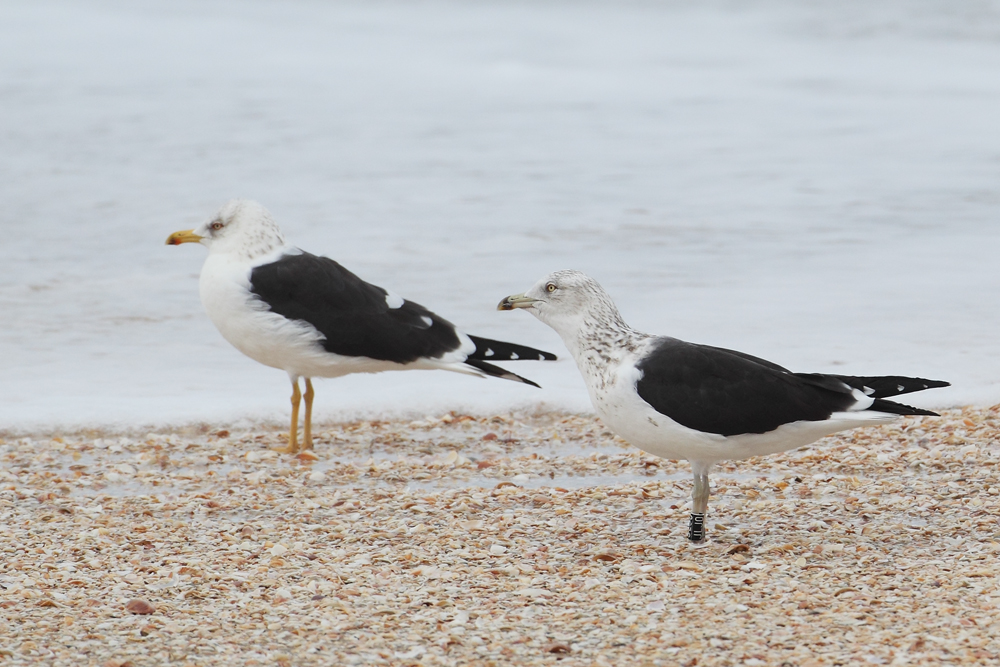
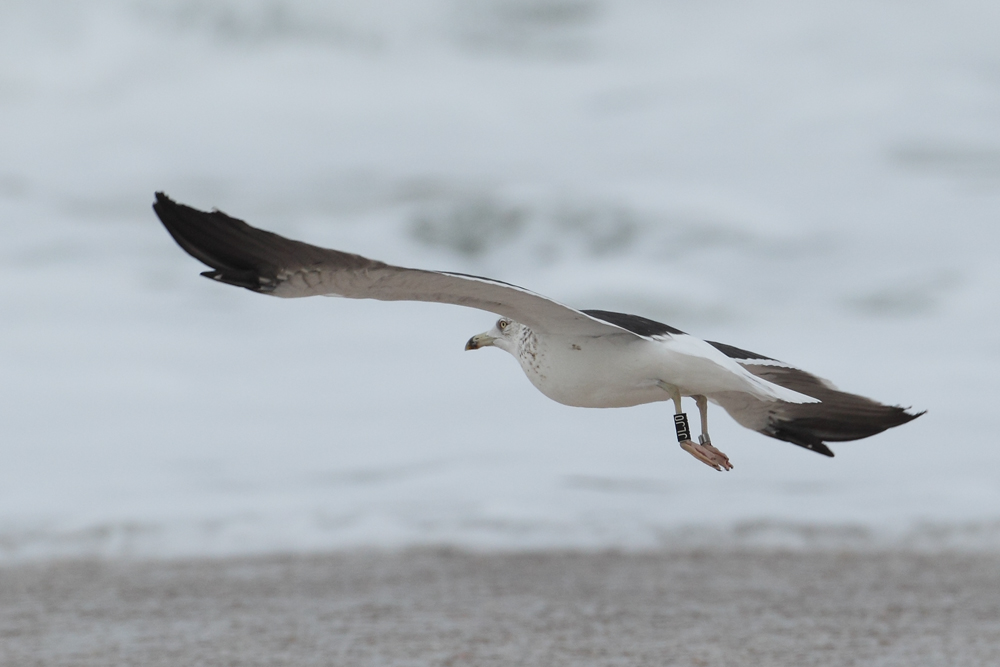
Larus fuscus fuscus 6cy JLJ0 January 09 2013, Ashdod, Israel. Picture Amir Ben Dov.
JLJ0 in complete moult by January. P6/P9. Large mirror on old P10, no mirror on old P9. Central and outer MC seem to be missing.
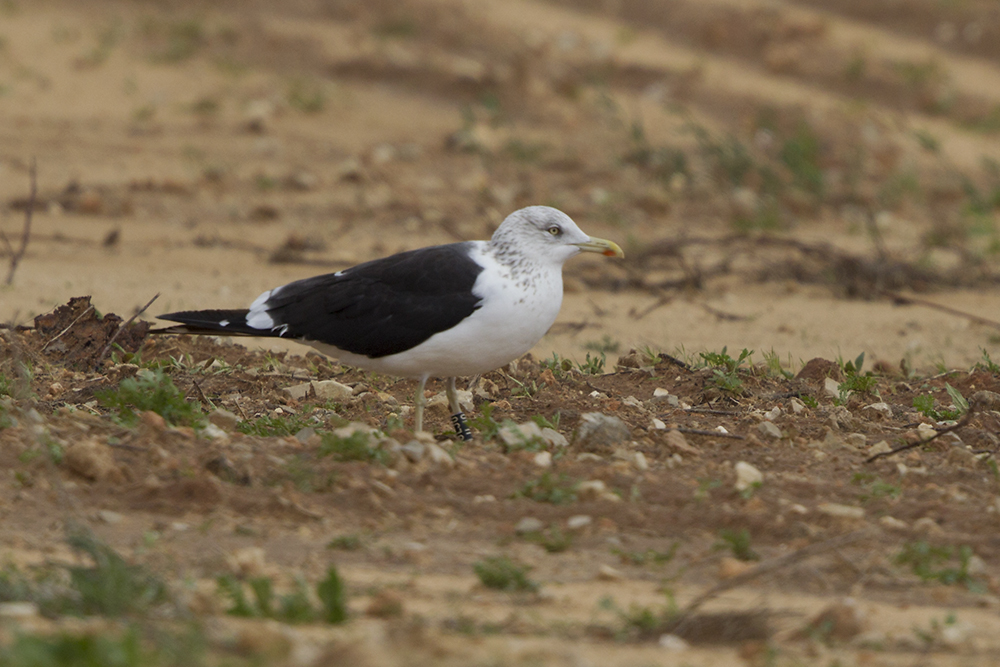
Larus fuscus fuscus 7cy JLJ0 March 29 2014, Ashdod, Israel. Picture Amir Ben Dov.
White head.
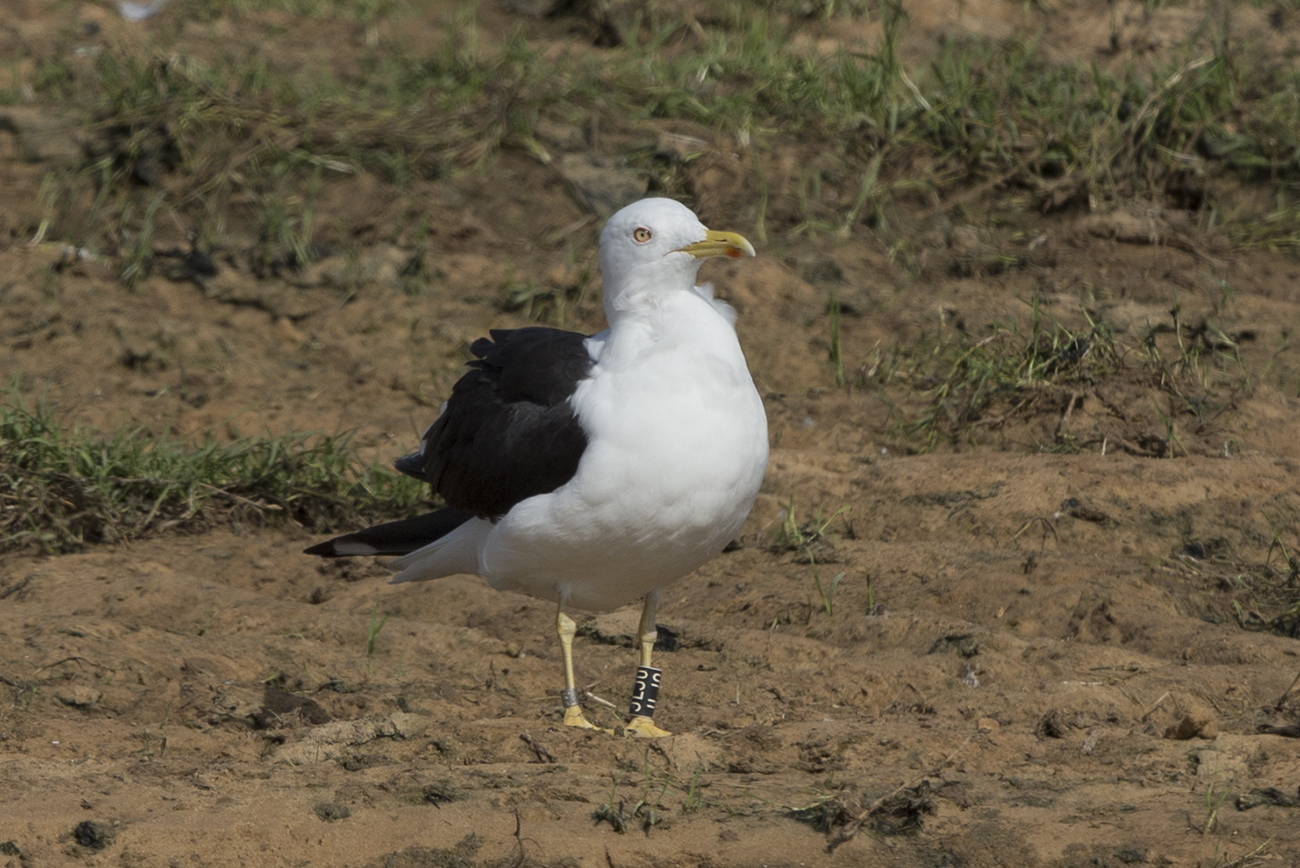
Larus fuscus fuscus 7cy JLJ0 April 11 2014, Ashdod, Israel. Picture Amir Ben Dov.
Crisp adult. With 2CY in front: P6 fully grown, P9-P10 old juvenile and new 2nd gen tail.
